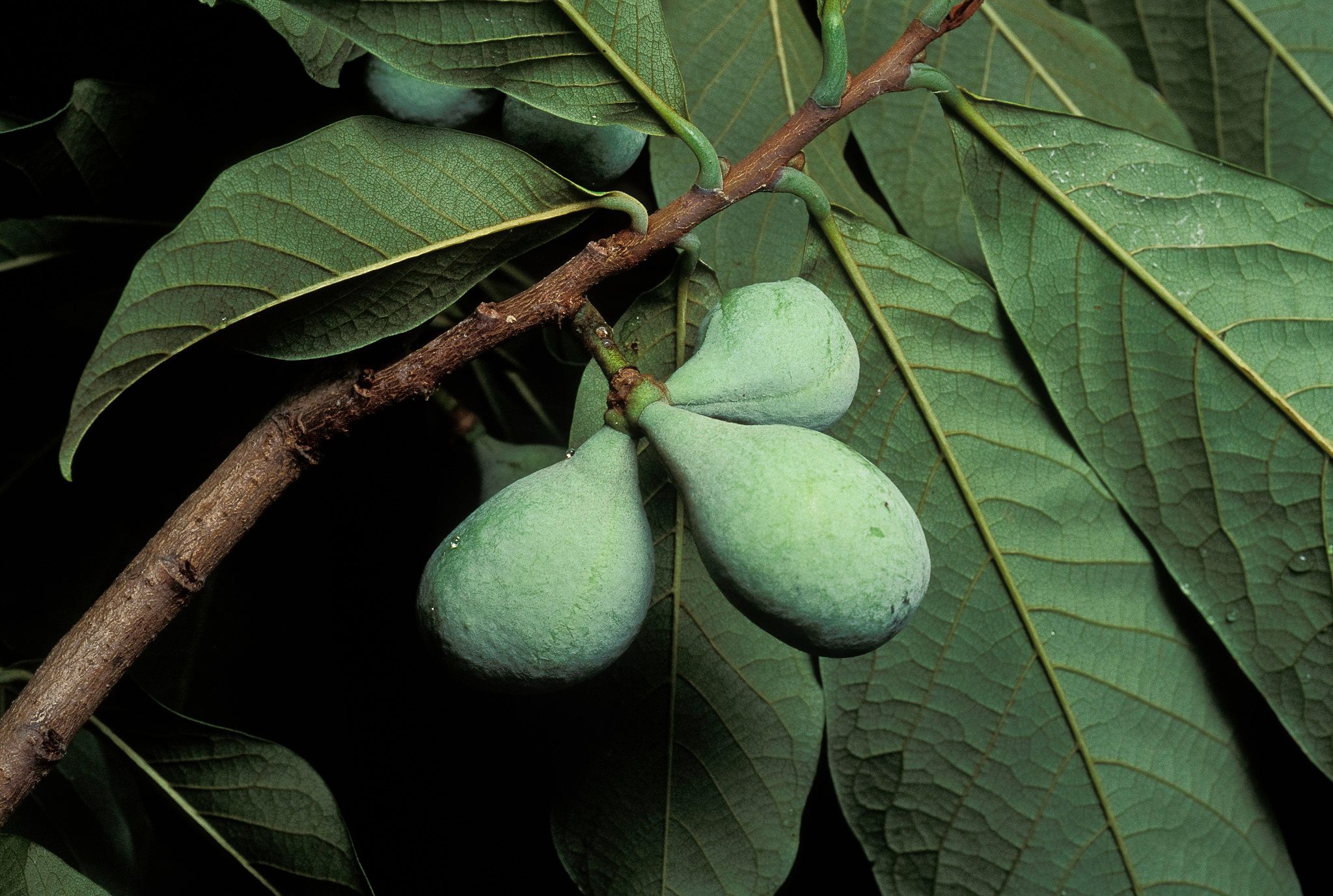
7 mins read
The Pawpaw: A Forgotten Nordic Fruit
Scientific Talk
Scientifically known as Asimina triloba, it's a large, underrated fruit native to North America. It grows on the pawpaw tree, a deciduous tree found in the eastern United States and southern Ontario, Canada. Note: A deciduous tree is a term for trees and shrubs that seasonally shed leaves.
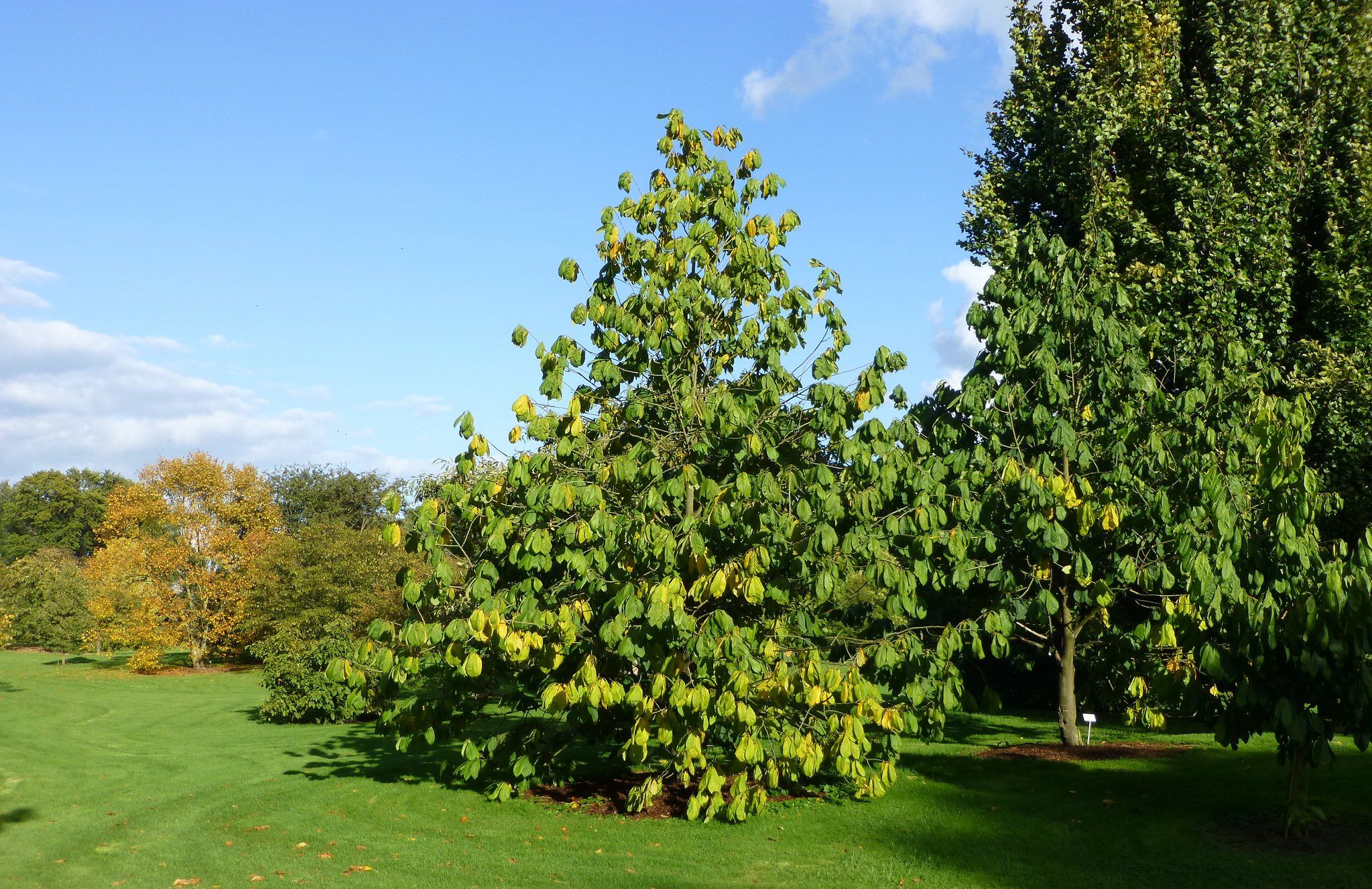 Image by The Tree Library from flickr (Creative Commons)
Image by The Tree Library from flickr (Creative Commons)
Botany
The pawpaw is part of the Annonaceae family, which includes the sugar apple, the soursop, and the cherimoya. Commonly known as the custard apple or soursop family, the species are mostly tropical. I was surprised that most of the species are tropical because Canada is far from tropical.
The genus is Asimina, the only member of that family not confined to the tropics. This genus includes eight species found in North America.
More precisely, Asimina is a genus of eight pawpaw tree species native to North America. It is the only member of that family not confined to the tropics. Triloba refers to the three-lobed leaves characteristic of this particular species.
Fruit Characteristics
Resembling a short banana and a small mango, the pawpaw fruit has a greenish-yellow skin that turns brown when ripe. Inside, the fruit has a creamy golden flesh similar to custard and large, dark brown seeds. The taste is described as a delightful blend of tropical fruits like mango and banana, with hints of citrus and floral notes, offering a taste unlike any other.
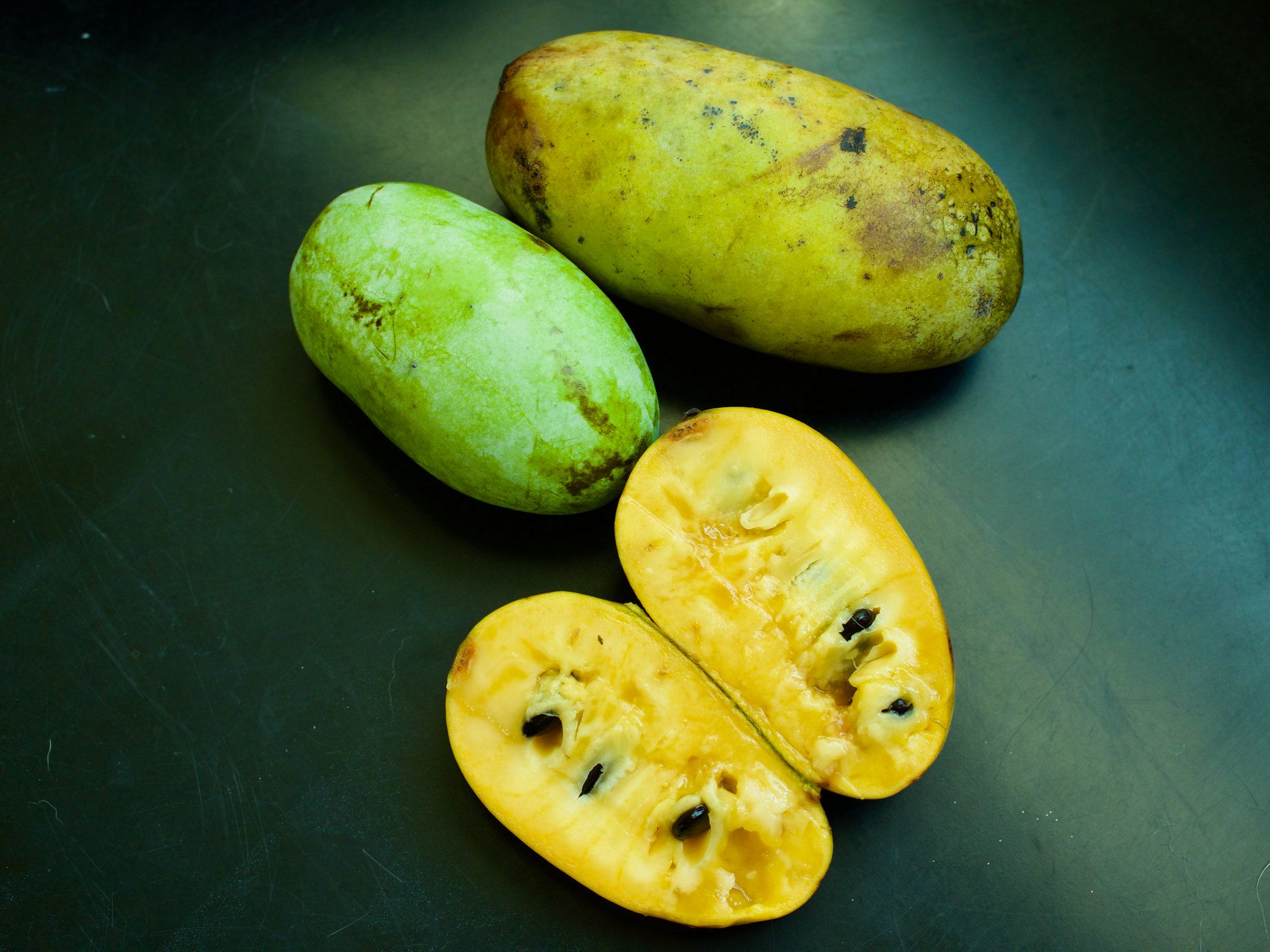 Image by Deckerme from flickr (CC BY 2.0 DEED license)
Image by Deckerme from flickr (CC BY 2.0 DEED license)
Tree Characteristics
The pawpaw tree is a relatively small tree with large green leaves. When mature, the flowers are a beautiful, rich red-purple or maroon. Still, some people find the flowers produce a faint, unpleasant smell, which they describe as fermenting fruits.
The Poor Man's Banana
During the Great Depression, which lasted from 1929 to 1939, it was challenging for people to obtain enough food, let alone fruits and vegetables. Bananas, once common, became rare and expensive during this period of economic hardship. However, the pawpaw, native to North America and growing wild in many areas, became an excellent option for those who knew how to harvest them.
The pawpaw has a similar texture and flavor to the banana, making it a sweet and tasty substitute for families who couldn't afford exotic fruits.
Since then, this creamy fruit has obtained the nickname of ''poor man's banana''. The sobriquet of the pawpaw is not derogatory towards the fruit itself. Instead, it reflects the historical circumstances that led to its adoption.
The Life of a Pawpaw
Even though the pawpaw's flavor is described as delicious and unique, why is it rare to find this fruit? During my research, I discovered that its popularity is on the rise. So, I delved deeper to find an answer to my question.
Pollination
Like many other unconventional characteristics of Asimina triloba, the pollination process of pawpaw trees differs from that of other fruits. Firstly, pawpaw trees are self-incompatible and require cross-pollination to produce fruit. While they cannot fertilize their own flowers, they cannot count on bees and butterflies' work. The truth is that the flowers give off an unpleasant odor to the common pollinator but will attract carrion beetles and flies.
Secondly, pawpaw flowers have terrible timing for pollinating themselves. The female stigma (the part that receives pollen) matures first. It is receptive before the male stamens (the pollen-producing part) release pollen. The peculiar flowering stages contribute to preventing self-pollination.
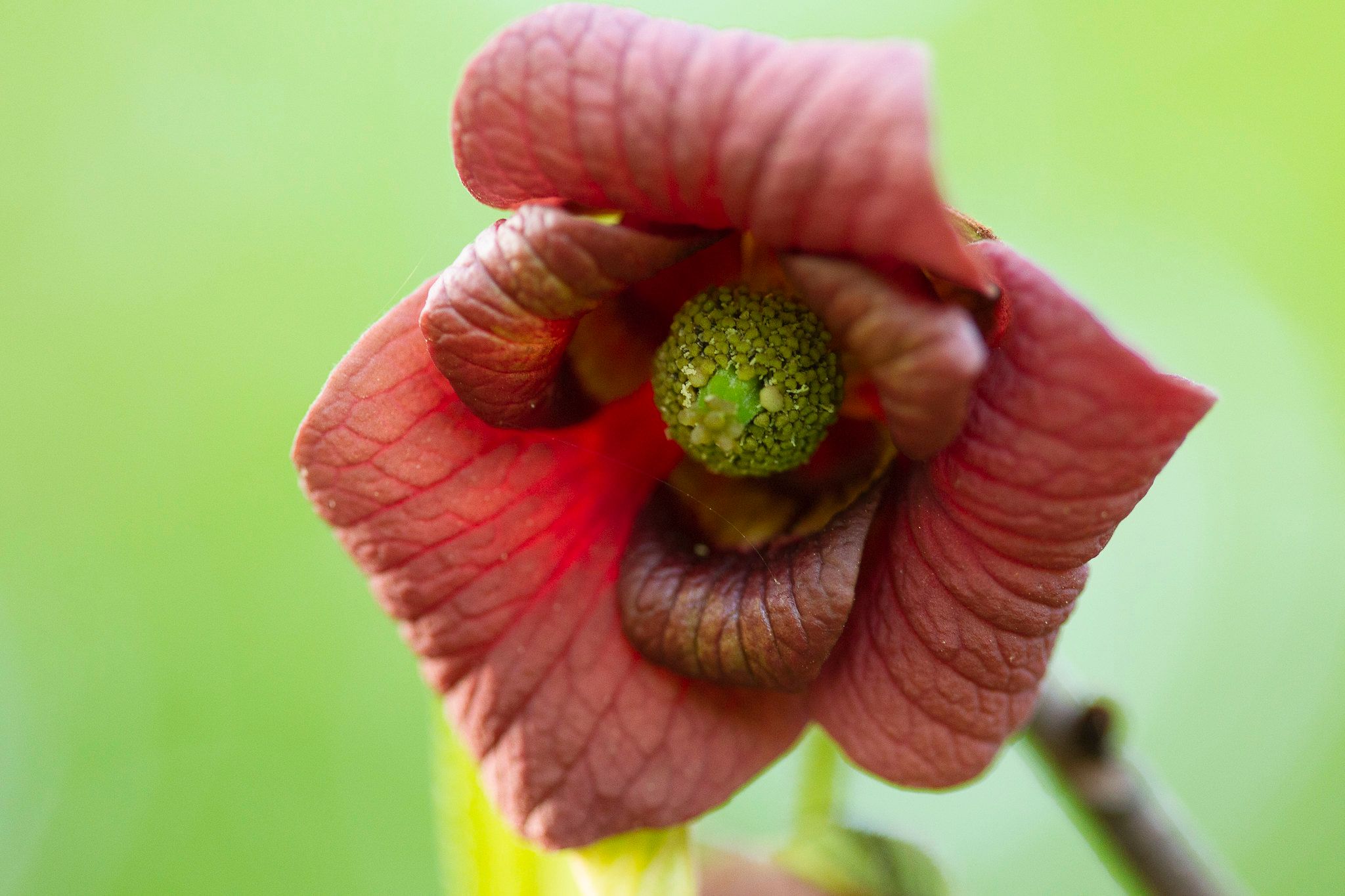 Image by Missouri State Archives from flickr (Creative Commons)
Image by Missouri State Archives from flickr (Creative Commons)
Here's a little breakdown:
The pawpaw flower begins in the female stage, with an open stigma ready to receive pollen. Carrion beetles and flies are attracted to the flower's odor and may crawl on it, potentially collecting pollen.
When the insects move to another pawpaw flower that is still receptive, they may transfer the pollen and achieve cross-pollination.
Later, the flowers transition to the male stage, ready to release pollen. However, at this point, the flower's stigma is no longer receptive.
Seeds
The Asimina triloba seeds are pretty big and indigestible for humans and most small animals. Yet, some animals, like birds and deers, contribute to seed dispersal. Attracted by the sweetest fruit, the animal will eat the pawpaw, but the seeds will remain intact as they pass through the digestive system. When the animal is ready to defecate, the seeds will have already traveled a significant distance.
It's important to note that seeds need a period of dormancy. This means they must be exposed to cold temperatures to simulate winter conditions and break the dormancy. This strategy helps to protect the seeds from harsh winter conditions, synchronizes germination with favorable spring seasons, and improves germination success.
Pawpaws in the Wild
Pawpaw farms are rare and have long been unattractive to many farmers. Even with popularity increasing, there is a greater chance of finding a pawpaw tree in the wild.
Habitat
Pawpaw trees thrive in deciduous forests under dappled sunlight and well-drained, slightly acidic soil with a pH of 5.5 to 7.0. They're sensitive to waterlogged conditions and seek shelter from harsh winds in winter. This interplay of elements fosters life and adaptation.
Cultivation
If you are interested in growing your pawpaw tree, there are two main methods:
Planting seeds may be a good option if you want a natural approach and are remarkably patient. It is a very low-cost option, but it requires knowledge. Be prepared to wait several years to reach a fruiting-size tree.
Planting a grafted tree is a faster option. It's important to purchase from reputable nurseries and ensure the grafted tree has already produced fruits. That will significantly reduce the time to harvest.
While it is a tree that grows without the care of a human, you can maximize the chance to harvest some delicious fruits with some tips:
Find a location that resembles the natural habitat of the pawpaw tree.
Ensure that the soil is well-drained and slightly acidic. If not, you may need to add some compost or manure.
Before planting, consider the spacing between the trees. The pawpaw tree can grow 10 to 40 feet tall and must be 10 to 15 feet apart to maximize fruit production and air circulation.
The tree needs consistent moisture. Water regularly during the first years and then during dry periods, regardless of the maturity of the tree
You can surround the tree's base with organic mulch (make sure that it does not touch the trunk). Mulching will help maintain moisture levels, suppress weeds, and regulate soil temperature.
You don't need to fertilize pawpaw trees, but if you want, only apply fertilizer in spring to avoid over-fertilizing.
Remove dead, diseased, or damaged branches to promote healthy growth. However, pawpaw trees don't require extensive pruning, which can negatively affect fruit production.
As we discussed earlier, pawpaw trees need cross-pollination to produce fruits. To increase the chances of getting fruits, plant different varieties of trees or use hand pollination techniques.
Protecting young pawpaw trees during winter with jute or other vegetal protection can be beneficial. By leaving an opening at the bottom, you can ensure good airflow.
The pawpaw fruit can be harvested from August to October. Look for fruits that have slightly softened and are tender to the touch. The skin color may change from green to yellowish-brown with brown spots. When ripe, the fruit will detach easily from the stem. Be sure not to wait too long to harvest, as the pawpaw fruit has a short shelf life.
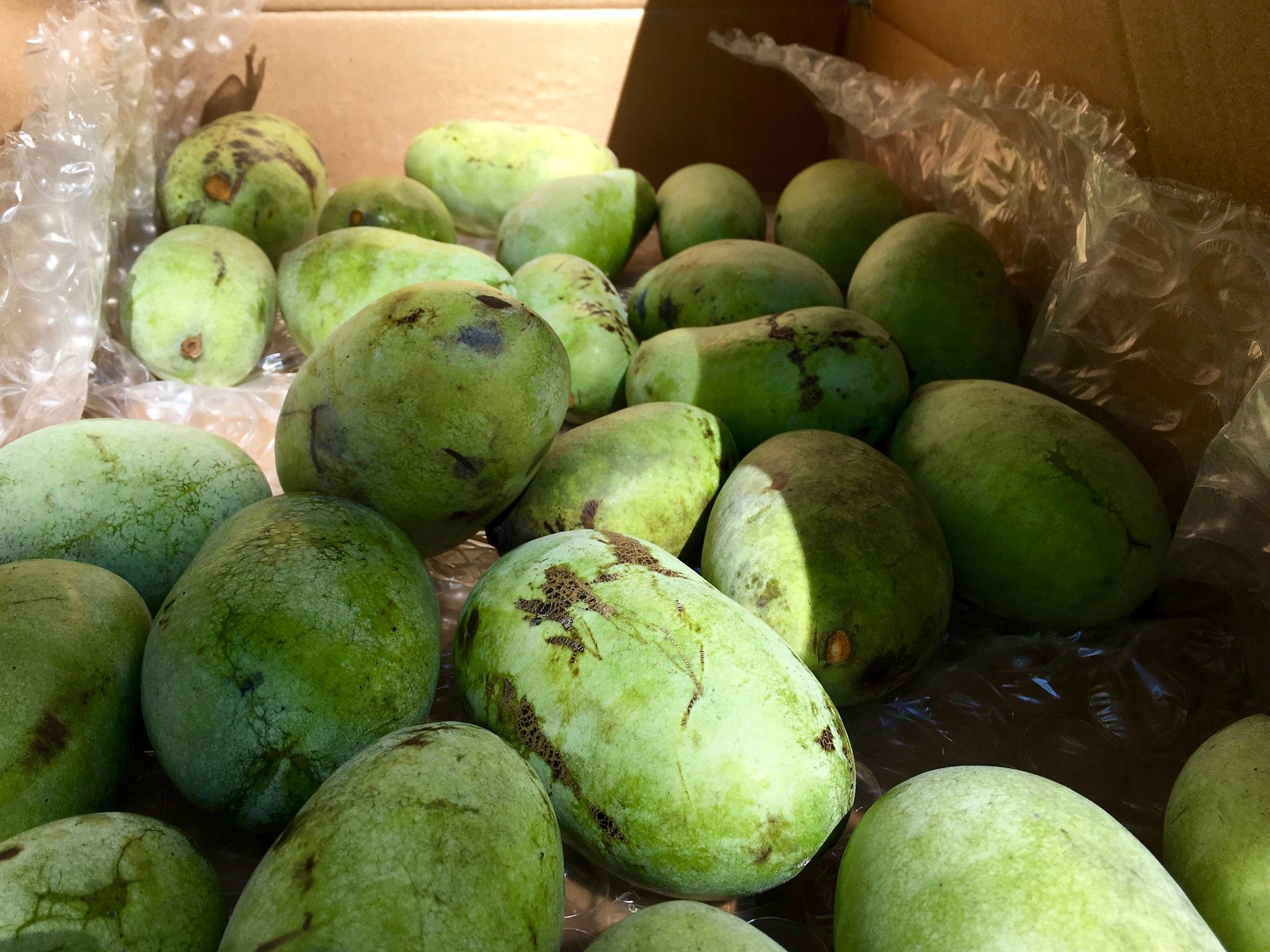 Image by Montgomery Parks, MNCPPC from flickr (CC BY-NC-ND 2.0 DEED license)
Image by Montgomery Parks, MNCPPC from flickr (CC BY-NC-ND 2.0 DEED license)
Disease and Pest
Fortunately, pawpaw trees are pretty resistant to pests and diseases. To be sure, keep an eye on some signs:
Look for black spots on leaves and fruit; a fungal disease can cause this.
Another fungal disease is Botrytis Blight. It causes grayish mold and rot on fruits, leaves, and flowers.
Phytophthora Root Rot is a fungal disease that attacks trees' roots, causing wilting, stunted growth, and potential death. It thrives in poorly drained soils.
A tiny moth larva (Pawpaw Peduncle Borer) can tunnel into flower buds or young fruit, causing damage and potential fruit loss.
Japanese beetles can cause cosmetic damage by feeding on the leaves, but they usually don't cause severe problems.
Multiple strategies exist to prevent and treat fungus and disease. But I will leave this section to a professional who can offer you a unique solution to your needs.
Culinary Potentials
Once picked, pawpaw fruits have a short life span; it is preferable to eat them fresh. You have several options if you want to eat something other than pawpaws for three days. Here are some:
The easiest method is to freeze fresh pawpaws. You remove the skin and dice the flesh, which you can later put on yogurt, fruit salad, or blend into a smoothie.
You can make various desserts, such as puddings, pies, mousses, or even ice cream. The creamy texture is an excellent addition to desserts.
Pawpaw puree can be used in muffins, breads, or cakes as a substitute for banana, pumpkin, or apple.
Pawpaw is a versatile fruit worth exploring.
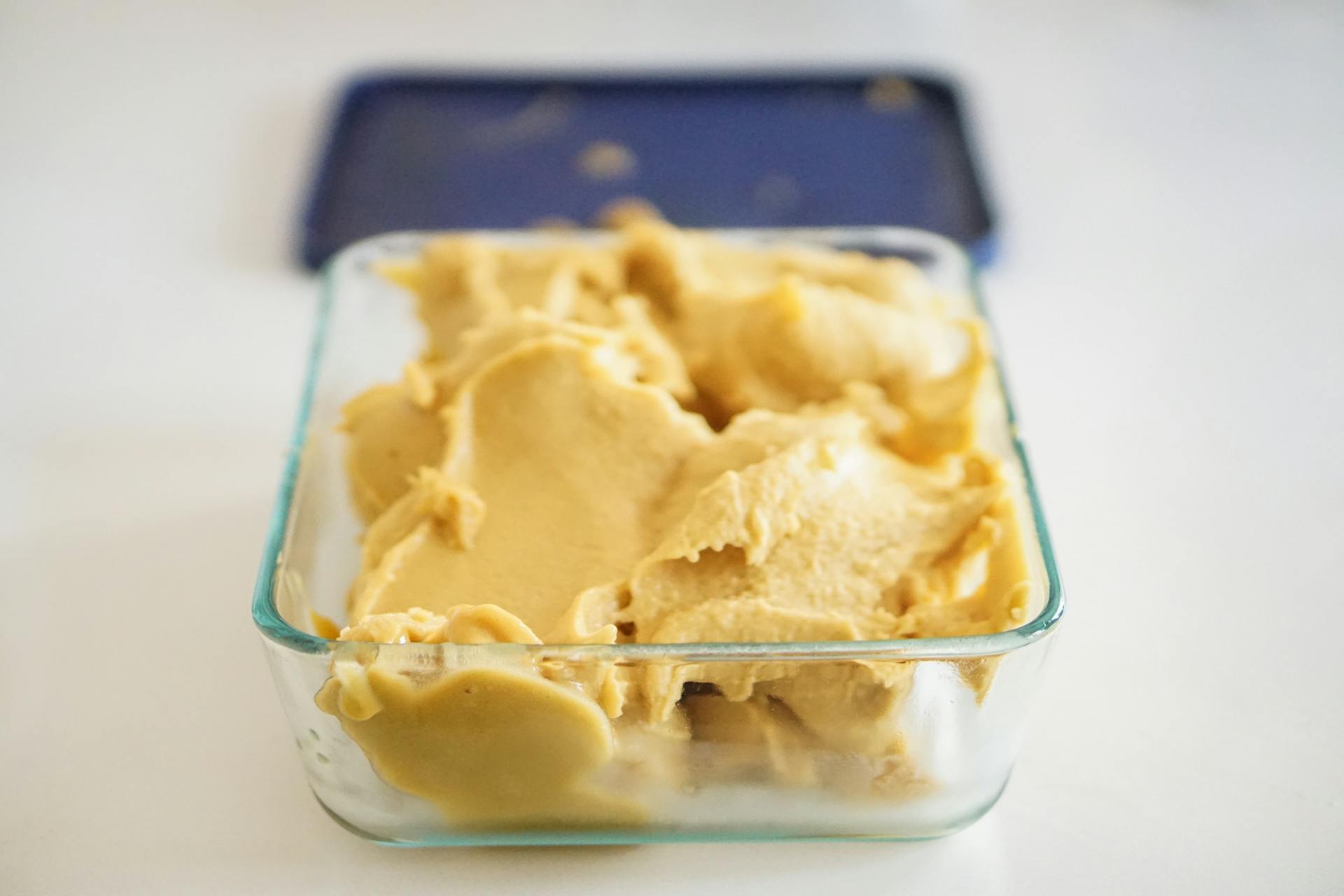 Image by Anna Guerrero from Pexels
Image by Anna Guerrero from Pexels
Conclusion
Researching this nordic fruit has been interesting. The historical meaning of the "poor man's banana" was a highlight for me. It made me think it's unfortunate that we often discover new fruits or vegetables only in hard times.
While I find the pawpaw does not have the better "survival instinct" with the complex pollination process and the indigestible seeds, I think it is a fruit worth caring for and preserving.
The pawpaw, with its creamy texture, tropical taste, and robust resilience, is a testament to nature's ingenuity and the forgotten treasures within our reach. I invite you to stay curious and encourage a deeper appreciation for our world's diverse bounty.
FAQ
Can pawpaws grow in cold climates?
Yes, with some care. Once established, they can withstand temperatures down to -32°C (-25°F) or even lower depending on the variety. But require protection when young.
Can I grow pawpaw from seed?
Yes, but it takes patience. Expect fruit in 5-10 years when grown from seed.
How do I ensure my Pawpaw trees bear fruit?
Ensure cross-pollination by planting at least two varieties and consider hand-pollinating if natural pollinators are insufficient.
Are pawpaws suitable for small gardens?
Absolutely! With proper pruning, pawpaws can be maintained at around 15 feet, making them suitable for various garden sizes.
Resources
Britannica Flowering Plants, Annonaceae
The Canadian Encyclopedia Pawpaw by Alain Cuerrier
OMAFRA (Ministry of Agriculture, Food and Rural Affairs) A resource for Specialty Crop Growers, Pawpaw
